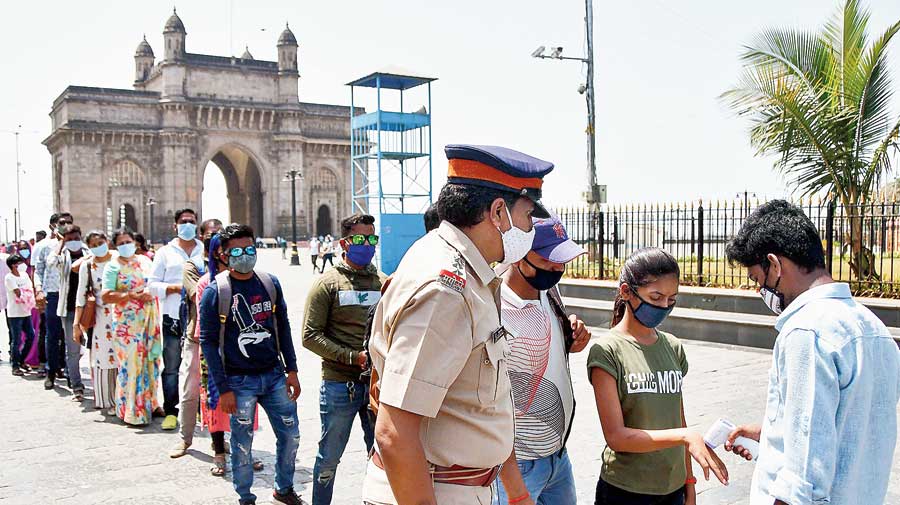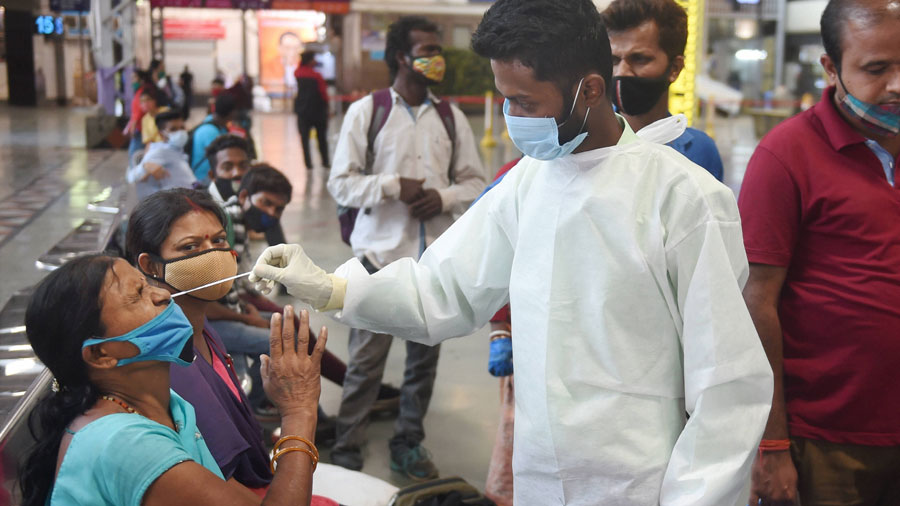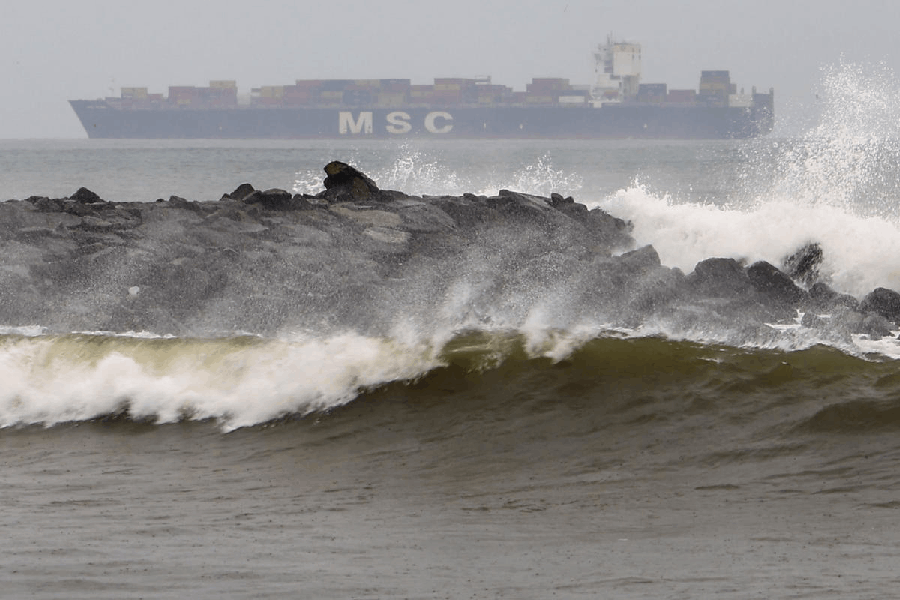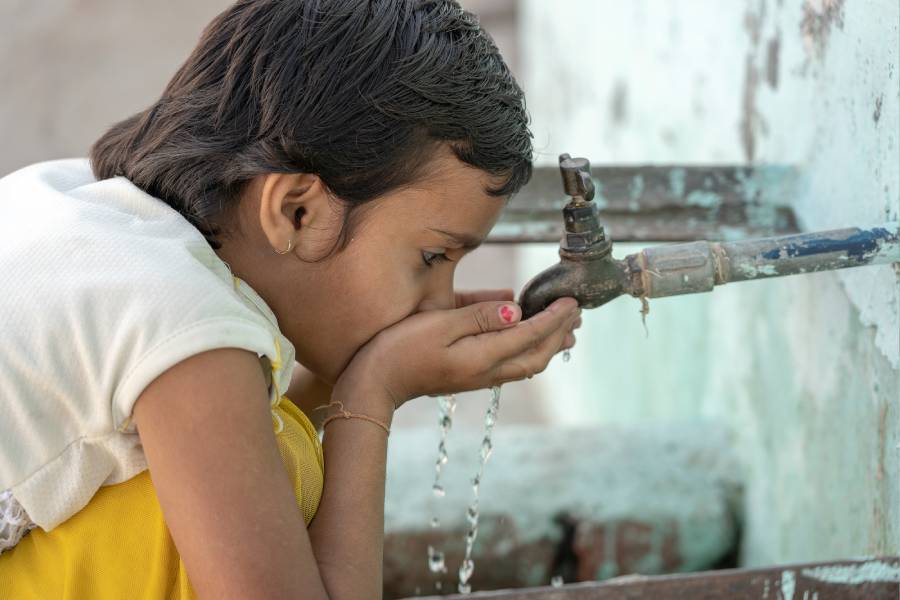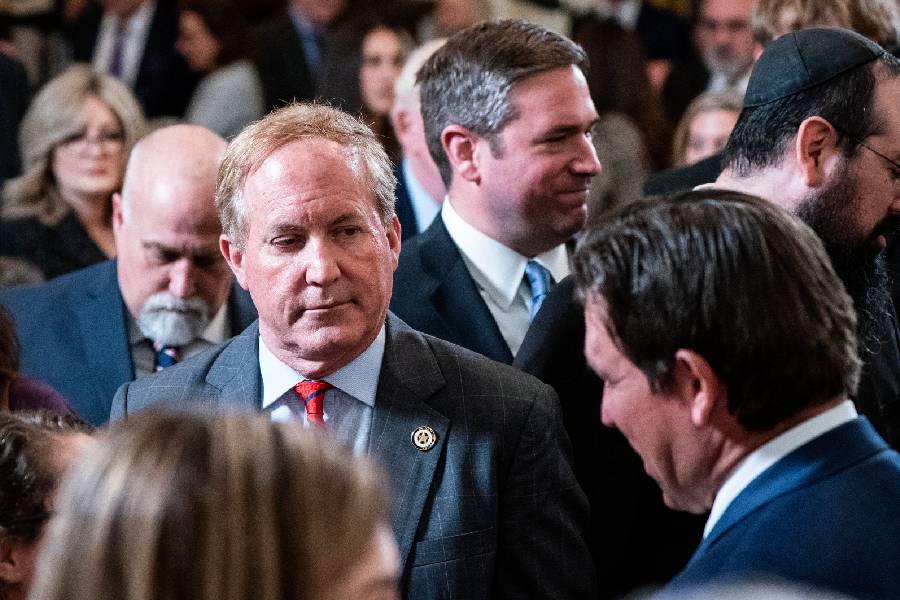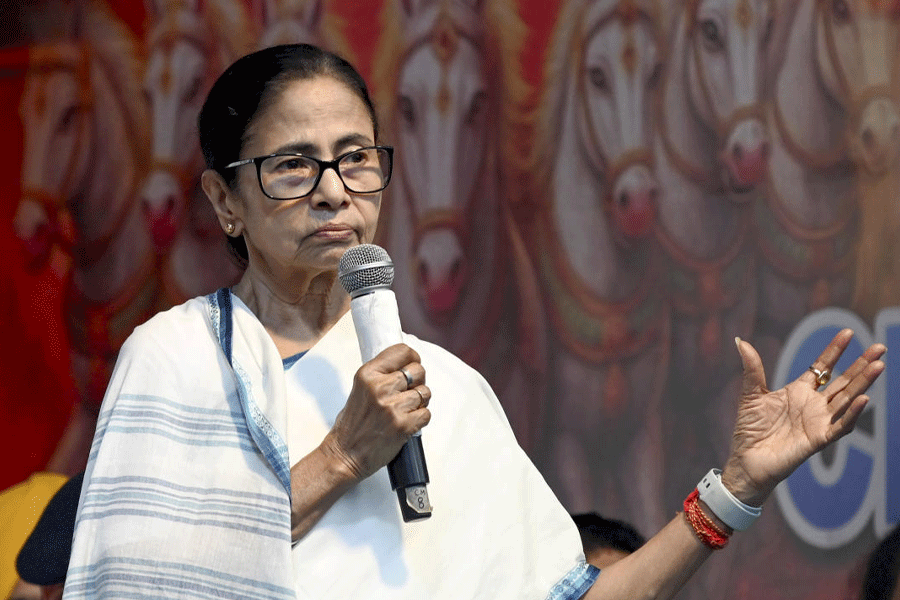Covid-19 denial among sections of the population and the failure of disease surveillance mechanisms to detect and contain localised infection clusters have contributed to India’s second wave, a top public health expert has said.
India on Sunday recorded over 93,000 new Covid-19 cases in the previous 24 hours and the epidemic appeared only a day away from surpassing its previous daily record of 97,894 cases.
Dr T. Sundararaman, global coordinator of the People’s Health Movement and a former executive director of the National Health Systems Resource Centre, New Delhi, to deconstruct the second wave tells The Telegraph why it is difficult — for now — to predict the peak or duration of the second wave.
Q: India’s second Covid-19 epidemic is growing even faster than during its first growth phase in July-August 2020. Was this anticipated?
T. Sundararaman: Yes, the rate of spread is much more rapid that in the first wave. In the first wave it took India 61 days to go from about 25,000 cases to 92,000 cases. In the second wave it has taken just 22 days — about one-third the time. The second wave should have been anticipated. Almost every country has had a second wave. But better-performing countries have had slower, flatter second waves.
The Indian government appears to have been taken by surprise. It is not the government alone. Premature predictions from the scientific community that there would be no second wave and even a science and technology ministry-supported modelling effort confidently predicting the end of the pandemic in February have been misleading.
Further, considerable levels of Covid-19-denial at the population and community level have contributed to this wave. Fortunately, after a cabinet secretary review meeting held on April 2, the government has expressed serious concern and directed a comprehensive response plan. But it would have been better if these measures had been done in four-month-long trough between the waves.
Q: Surveys in Ahmedabad, Delhi, Mumbai, Pune, had indicated that 25 to 30 per cent of the population had already been infected by December. These prevalence figures along with declining counts in December-January had stirred speculation that India may be approaching herd immunity. Why then has such a growth taken place?
Sundararaman: The “threshold level of herd immunity” required to prevent Covid-19 spread is estimated to be anywhere between 60 per cent and 75 per cent. The exact level depends on the infectivity of the virus. Given that only 25 per cent of the population was immune in December, another 450 million would have to get infection if we were to reach a herd immunity level of 60 per cent through natural infections alone.
Even with 1 per cent or less mortality rates, the number of deaths in the country would be unacceptably high. Achieving this herd immunity threshold level of 60 per cent does not mean elimination of the disease. It only means the epidemic shrinks vastly.
New cases and deaths would continue and there could be outbreaks in sections of the population where infection or vaccination levels are low, like rural areas. Achieving herd immunity by infection — as different from vaccinations — was never a strategy of control and we were never near achieving it.
Nor is it a credible explanation for the declining cases after the first wave.

A very good disease surveillance system should be able to detect and respond promptly to small potentially-containable cluster-level outbreaks — but discovered too late these multiple outbreaks have snowballed into a second wave
Dr T. Sundararaman
Q: What drives this second wave? Is it even possible to predict how high can the peak go or how long this wave will last?
Sundararaman: In most countries the second wave has been larger than the first. In some there has been a smaller second peak but then a large third wave. Only New Zealand and a few other countries are an exception to this rule. Some countries that did well in the first round have done a good job of containing the second round. Like South Korea or Australia or Thailand — but others like Brazil and Mexico or many European countries did not.
Second and subsequent waves are not due to re-infections. Reinfection remains an exceptional event. Second waves are also unlikely to be due to mutant strains. Mutant strains in India have not been linked to increased infectivity (except to some extent in Punjab) and cannot explain the second wave in most countries. Blaming slackening of social distancing and masking, has some truth to it, but this is only a partial and inadequate explanation.
Covid-19 infection spreads along social networks of people in frequent contact with each other. Within a geography like a village or city ward, there are multiple heterogeneous social networks in terms of inter-mixing, observance of rules, cultural practices, health-seeking behaviour, and stigma. The inter-connections between networks or clusters of people are semi-random, irregular and unpredictable.
Thus, the disease can burn out within one cluster of the people by a combination of this group having more immune persons, and/or better control measures and health behaviours. But the disease continues to spread at low levels within non-immune persons in this cluster and to other clusters which are more susceptible. Soon, the density of cases within new clusters reaches levels that spark off outbreaks.
A very good disease surveillance system should be able to detect and respond promptly to small potentially-containable cluster-level outbreaks — but discovered too late these multiple outbreaks have snowballed into a second wave.
Another reason for late discovery and response to small cluster outbreaks is the laxity in implementing test, track and treat protocols outside known hotspots and, surprisingly, extensive stigma and Covid-19-denial in the community. We have observed this in our field studies.
Going by other countries’ experience, India’s second wave is likely to be larger than its first, but how high it will go will depend both on effectiveness of control measures and on this unpredictable element of how it spreads within these inter-connected clusters.
There is no accurate way to predict the peak or duration of this second wave. Maharashtra’s cases are already more than double the September peak, and still rising. Perhaps this wave will subside by May, but as long as the majority of people are non-immune to the disease, and disease surveillance and response is sub-optimal, there would be even more waves to follow. Achieving adequate levels of herd immunity through scaling up vaccination is currently the most ethical and effective way to get out of this crisis situation — but even this is not a standalone solution.
Q: Is the Centre better prepared to face the second wave as compared to the first? The Centre has attributed the spread to two factors (1) lack of precautions by people, (2) laxity in public health measures such as isolation, contact tracing, quarantine, and testing with RT-PCR. How best can these be addressed?
Sundararaman: There are some strengths India has acquired while managing the first wave. Firstly, vaccines are now available. We must urgently develop a vaccine delivery strategy that prioritises the population sub-groups by occupation and marginalisation, who are most at risk and from whom spread is most likely.
Secondly, India has immensely expanded testing capacity — from 1,200 tests and three testing centres to over 1.2 million tests per day and about 2,500 testing centres. Over 90 per cent of production is domestic. The challenge here is to address inequities in access due to both due price and non-price barriers.
Another strength is that the necessary intensive care unit management skills and equipment and beds have increased considerably. But the concern is that this would still be short of requirements. Also, the cost and quality regulations in the private sector care are very poorly designed and implemented, and even patients with PM-JAY coverage are unable to access free hospital services.
However, there is clearly much to be done on health behaviour. The failure to achieve behaviour change must not be blamed on people in a passive and helpless manner. By now the public health leadership should have gathered good evidence from research on the most effective approaches to behaviour change communication within specific circumstances in which people are living.
An excessive reliance on law and order approaches is worse than ineffective. It leads to stigmatisation and denial of the problem that makes measures like contact tracing, isolation and testing even more difficult to practise. There are examples of community engagement for such purposes — but this requires to be made the norm and scaled up rapidly.

The failure to achieve behaviour change must not be blamed on people in a passive and helpless manner. By now the public health leadership should have gathered good evidence from research on the most effective approaches to behaviour change communication
Dr T. Sundararaman
Q: The Centre says for each positive case, at least 20 close contacts should be traced and quarantined. For 80,000 new cases, that would mean tracing 1.6 million contacts across the country daily. Is that even possible? What is the best strategy forward?
Sundararaman: A nationwide aggregation of the figure makes the task look impossible. But this average of 20 close contacts per case is an eminently achievable and essential objective. Centralised solutions like Aarogya Setu have failed quite miserably. To achieve this objective, the government must decentralise this task completely to local governments, to employers, to social security agencies and to other local organisations and associations — all of which should be working with outreach workers of the public health system.
Contact tracing is not a police function. It is the function of social workers who have the community’s trust. Contact tracing remains relevant even when community transmission is established and disease is widespread — since at the local level, the target is on limiting spread within clusters and across clusters. Physical barricading of houses and streets where there are infections in contrast, followed at local levels, is a useless if not a harmful measure.
The government has an old weakness in failing to make communities active participants in health care. This has only worsened with home departments and general administration taking over these public health functions. But the second wave is an opportunity to get back the public into public health.

